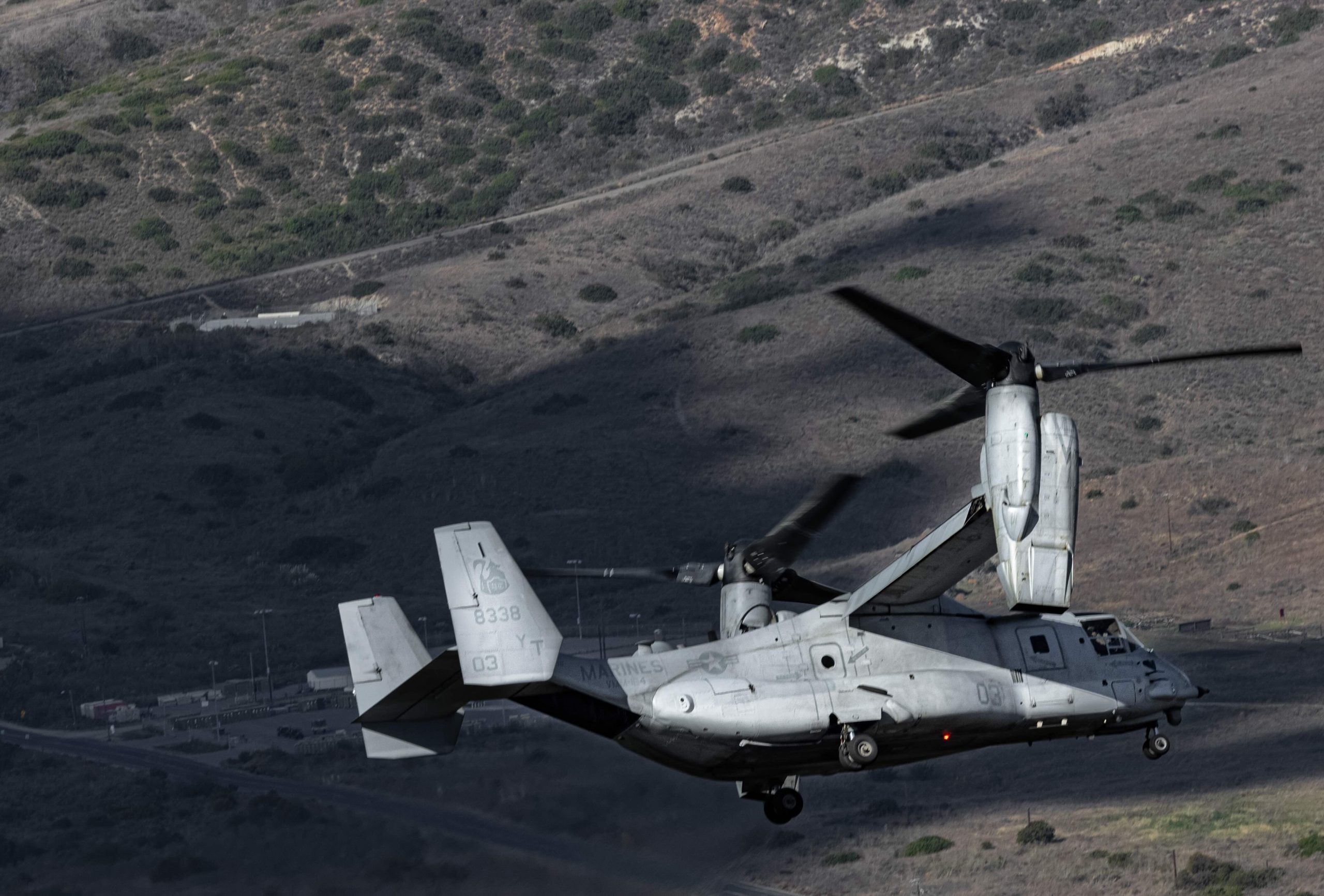
CAMP PENDLETON, Calif. — The platoons of infantry Marines stepped out of the first group of MV-22B Ospreys that landed in a brushy field last week and made their way to a nearby compound. They arrived at the request of the U.S. State Department to protect the U.S. embassy amid rising local tensions in a fictional city hit by a natural disaster.
The embassy reinforcement mission is just one training scenario playing out over the next three weeks across California and Arizona during Steel Knight 23.2 and involving more than 7,000 Marine Corps, Navy and Air Force personnel. The annual exercise, which began last week and ends Dec. 15, is the 1st Marine Division’s combined-arms, large-scale exercise to ensure the division’s support to I Marine Expeditionary Force in a future contested fight.
Steel Knight has expanded in recent years, with greater focus on enhancing interoperability as a Marine air-ground task force and operating in a multidomain environment at sea and ashore with naval forces and I MEF subordinate units, 3rd Marine Aircraft Wing and 1st Marine Logistics Group.
What once was a ground-centric 1st Marine Division exercise has become a fully MAGTF exercise and “more of a naval-focused exercise where we’re fighting in the littorals,” said Capt. Joseph DiPietro, a division spokesman.
Throughout Steel Knight, the Marines are training with San Diego-based Expeditionary Strike Group 3 and U.S. Third Fleet units in maritime scenarios that will include Peruvian and Mexican amphibious warfare ships supporting humanitarian assistance training scenarios. That marks the first time for foreign naval participation during Steel Knight, DiPietro said. “We are really excited to incorporate the Mexican and the Peruvian navies in this exercise.”
Also this year, the Air Force Reserve’s Florida-based 920th Rescue Wing is joining in on search-and-rescue training. “The Air Force participation this year is huge,” said DiPietro. That includes joint strike missions with simulated and live aircraft including the B-1 Lancer bomber and F-15 Eagle strike fighter jets. “They are bringing some other really great Air Force assets to the fight… It’s really a great joint (capabilities) exercise now,” he added.
Master Gunnery Sgt. Robert Robinson, the division operations chief, noted that “each branch of service kind of has their own way of doing things. So learning to communicate with one another and share resources is a huge part of why we do these exercises and build those relationships across the different commands.”
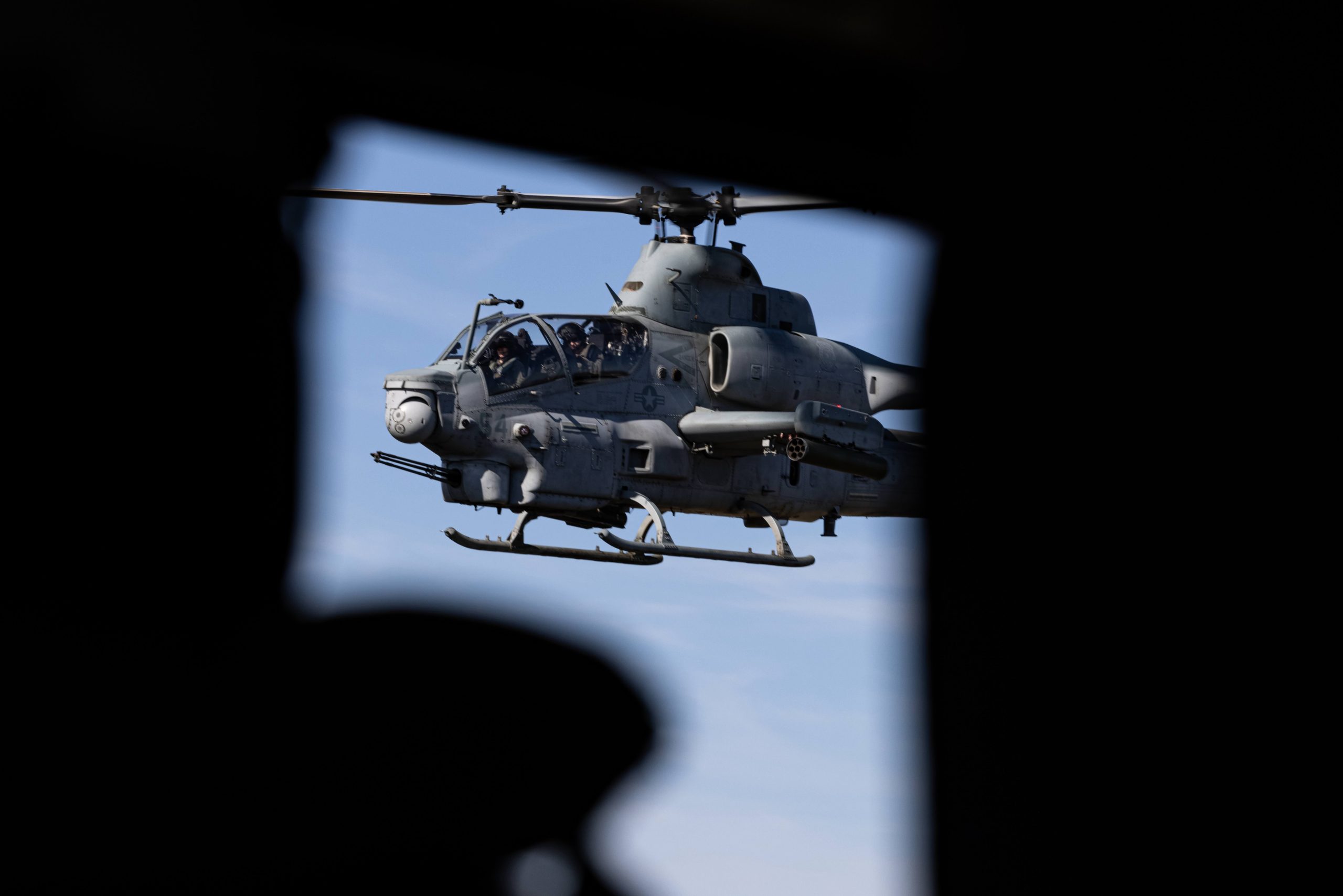
Steel Knight’s overall scenario incorporates an expansive battlespace that replicates the Indo-Pacific islands-chain conflict scenario envisioned by military leaders. The simulated advanced base distributed operations concept poses challenges to logistical support as much as delivering lethal firepower, officials say.
Training events are unfurling across more than a half-dozen bases in California – including Fort Hunter Liggett, Naval Base Ventura County, China Lake Naval Weapons Station, and the Chocolate Mountain aerial gunnery range – offshore at San Clemente Island and at Yuma, Ariz. Top commanders are leading forces from battle simulation centers and at the exercise hub in Coronado, Calif.
Scenarios are forcing commanders to think through aviation logistics and ground logistics across an island chain “and understanding how we command and control that,” said Col. Jeremie Hester, an AH-1 pilot and commander of Marine Aircraft Group 39 at Camp Pendleton, Calif.
“This is a really tough problem set, and it’s really going to be logistics that we need to figure out how to resupply and figuring out those (host-nation) partnerships,” Hester said. “But what does that look like when you put it into practice?” he added.
Bigger battlespace
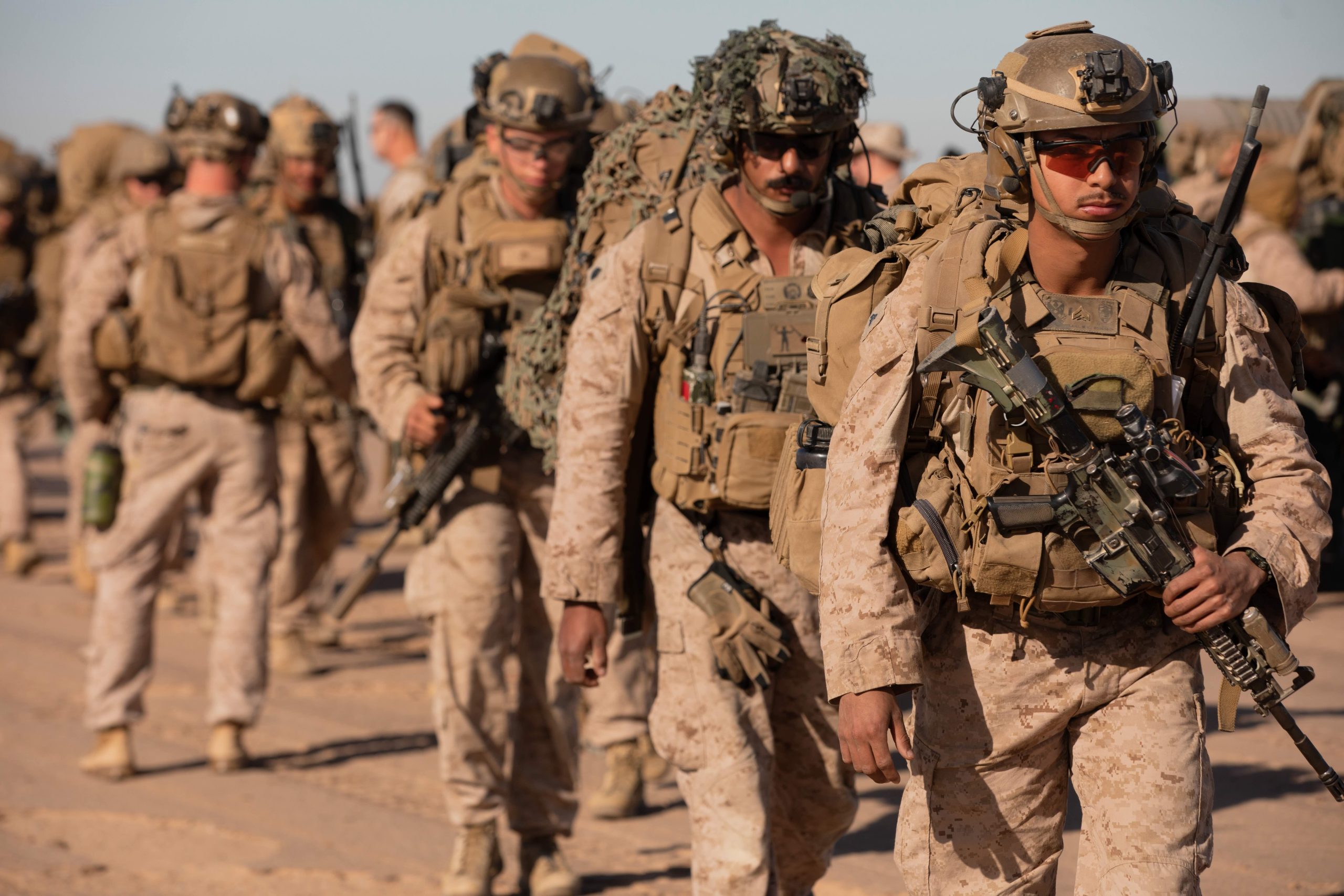
That enlarged exercise scenario during Steel Knight is playing across a battlespace greatly expanded thanks to the Marine Corps’ Project Tripoli. The idea is to link and connect real and simulated disparate units, forces, capabilities and ranges into one exercise, so they can realistically train on a shared battlespace that stretches well beyond what installations and training ranges physically can provide.
Steel Knight marks the service’s first implementation of its newest live, virtual and constructive training platform that provides a common operating picture and enables Fleet Marine Force units to link with other units at other locations, including naval forces, and access combat capabilities that otherwise are not available.
But those capabilities can be provided virtually to support that training. A Marine pilot flying the Lightning II joint strike fighter in a simulator, for example, could join a mission and launch an attack on an objective targeted by a live force of Marines on the ground talking in real time with the pilot.
“So if we don’t have an F-35 squadron [available] because they’re forward deployed while we’re running an exercise, that commander is going to be shorted training if he doesn’t have the ability to integrate our future multidomain tactical airplane,” said Lt. Gen. Kevin Iiams, a veteran pilot who leads Marine Corps Training and Education Command at Quantico, Va.
Project Tripoli provides “an on-demand system,” Iiams said by phone from Orlando, Fla., where he’s attending the I/ITSEC 2023 conference. “So you’ll be able to go into the scheduling system and find other units who might be across the country or around the globe and be able to knit together some training in real time with them. So instead of having to wait to coagulate an entire force at 29 Palms to do a multidomain fight, you’re going to be able to do that in a distributed fashion from all over the globe.
“This is also going to give us the capability to train the stand-in force in that first island chain in the face of an adversary, and be able to do all of our high-end training without the adversary ever actually seeing what we’re doing or knowing what we’re doing,” he said.
The Marine Corps’ successful demonstration last year “showed that we can actually network what was previously disparate training systems into one homogeneous Project Tripoli,” Iiams said. “We had air, surface, space and force-on-force training systems with a debriefing tool, all integrated. So we can compile everything that was happening in the battlespace for an after-action brief that would occur later.”
Project Tripoli is TECOM’s priority, “is how we are going to deliver a training capability to the FMF to train today,” he said. He expects it will be fully available at the Marine Corps’ five major bases by the fourth quarter of fiscal 2024.
Naval logistics support
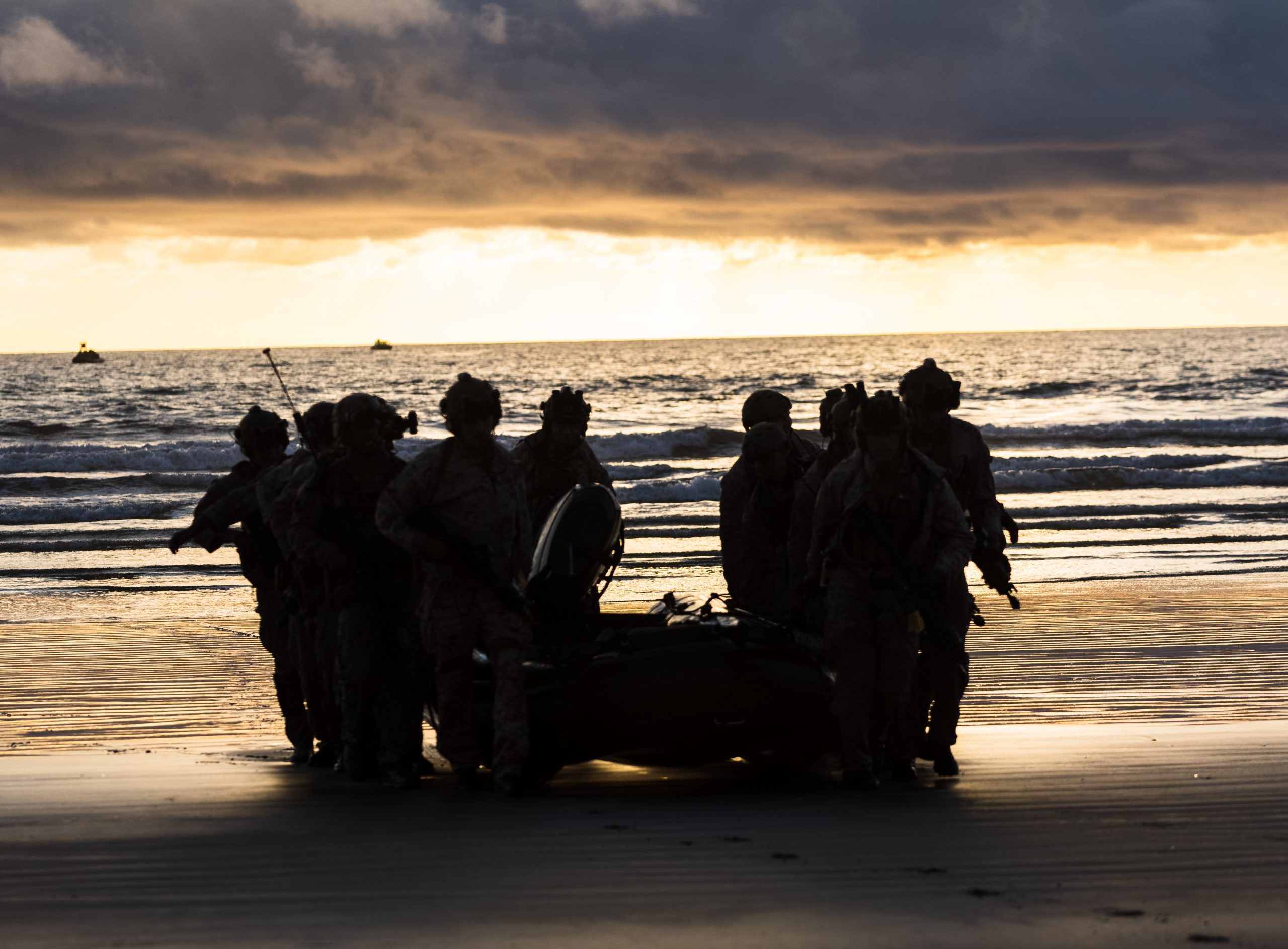
During Steel Knight, about 135 sailors with Naval Beach Group 1 are experimenting with distributed logistics as they provide support to the Marines.
“The whole reason this group exists is to support the Marine Corps. I’m either part of the assault force delivering Marines into the fight, or I’m part of the follow-on forces sustaining Marines in the fight,” said Navy Capt. Joel Stewart, NBG-1’s commander. “Either I deliver the Marines or I deliver the logistics across the beach.” The Coronado, Calif.-based group operates utility landing craft and air-cushioned landing craft (LCU/LCAC) as well as bulk fuel systems and runs beach and ship offload operations.
During Steel Knight, Stewart said, “I’m looking at different ways of delivering that logistics than what we’ve done in the past. Instead of doing one large giant encampment where we are putting all the logistics through at one point, (we have) more nodal distribution, small beachheads, small beaches… and then pull out and we reset someplace else.”
“This is a limited experiment to see what’s in the realm of possible,” he said, noting his goal is “figuring out what I can do to support the Marine Corps in the future.”
“My role is literally the last tactical mile. I don’t worry about getting it into theater. I worry about getting it across the beach,” he added.
The limited experimentation, Stewart said, “is utilizing existing equipment sets in different uses. Basically, I’m taking old equipment and figuring out new ways to employ it.” That includes putting refrigerated containers on LCUs to move and deliver food to different locations, replicating what his forces would do to support Marines in an island-chain fight, he said.“Yes, we’re doing it coastal, but the distances we’re covering are over-the-horizon, open ocean distances.”
The LCU, he noted, “was not designed for open-ocean, over-the-horizon transits. But we’re using it that way.”
His sailors also will work with Improved Navy Lighterage System’s modules, Stewart said. That includes the INLS floating causeway ferry that, when connected with a power module and bow ramp, can be turned “into a big barge that is self-powered and that can go through the surf.”
“We train with it all the time. This is the first time I’m going to use it for over-the-horizon distances,” he added, with planned refueling stops to stretch it to 100 miles.
Exercising embassy support
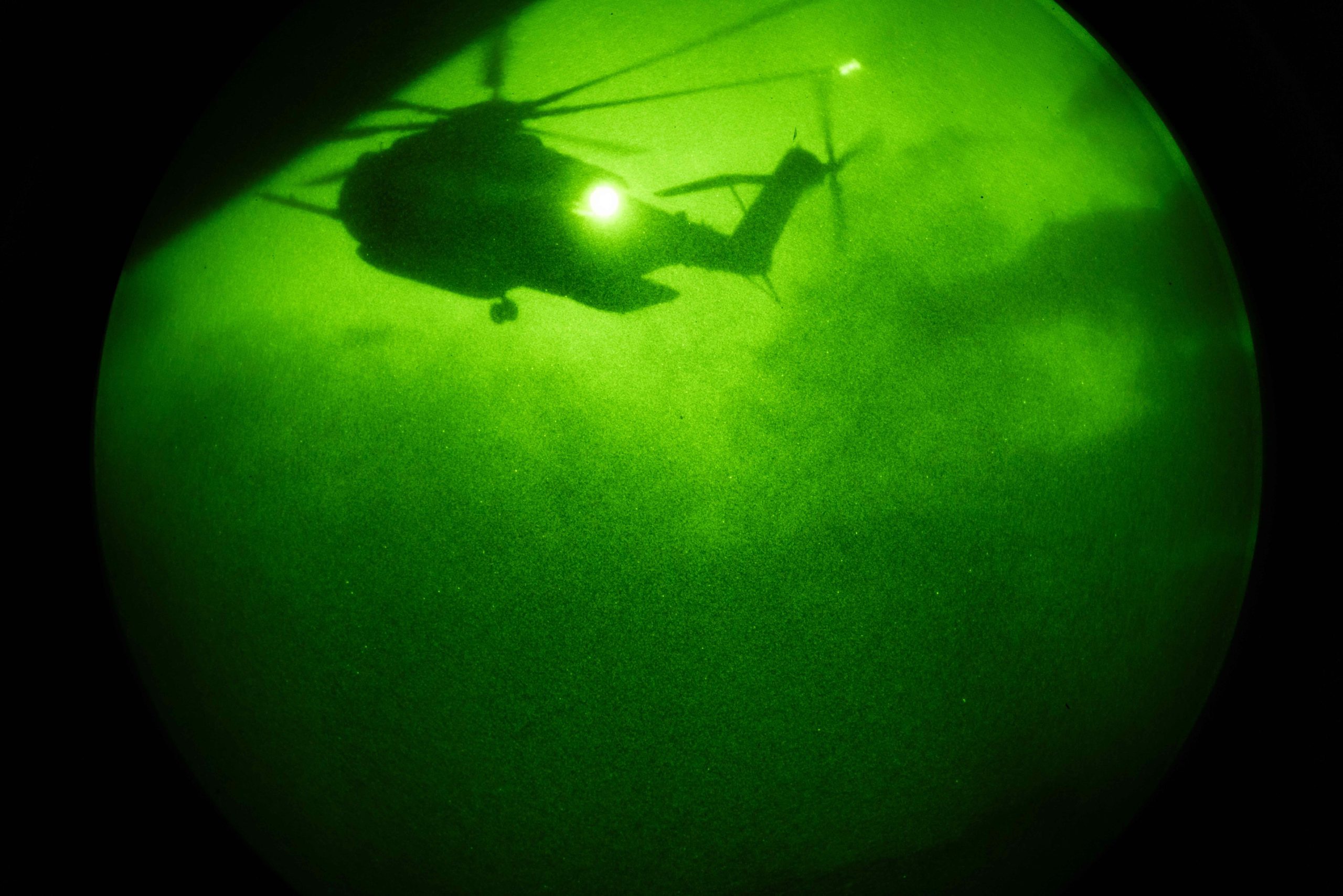
The embassy reinforcement and evacuation scenario also serves as a mission rehearsal exercise to certify 5th Marines as the regimental headquarters that will lead units deploying to Australia next spring as Marine Rotational Force-Darwin, division officials said.
The scenario that played out at Camp Pendleton’s Infantry Immersion Trainer let Fox Company, 2nd Battalion, 5th Marine Regiment work their soft skills with U.S. Department of State representatives, interactions they might encounter overseas.
“It’s one of the key components of an event like this, to integrate with the State Department appropriately, effectively and quickly to ensure that all of the proper policies are followed and adhered by,” said Robinson, who’s career includes a tour as a Marine security guard at the U.S. Embassy in Berlin, Germany. “It’s a very complicated situation, so we want to make sure it’s as seamless as possible and they get a full, realistic repetition at it so if it happens in the future, they’ll know exactly what to look for and who to talk to.”
Fox Company was in Yuma, Ariz., when it got the training mission, and they boarded MV-22B Ospreys with Marine Medium Tiltrotor Squadron 164 for the 200-mile flight to Camp Pendleton. A big challenge, said Capt. Austin Dickey, Fox Company commander, “is getting ready in one location and then moving potentially hundreds of miles to another drastically different environment… and be ready to execute that.”
“It’s important for us to stay ready,” Dickey said, “because we don’t know when we will have to be called upon.”





